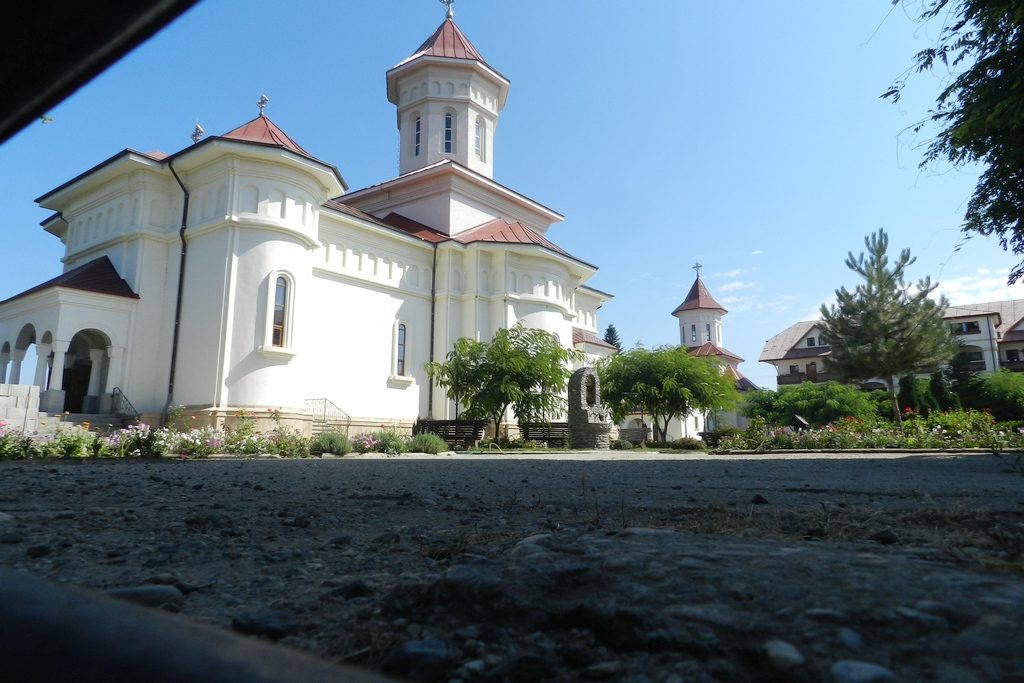

Built up in the year 1993, with the blessing of His Eminence Metropolitan Vlasie and by the efforts of His Grace Flavian Ilfoveanul, helped by the Christians from the area, which wanted the foundation of a church in the area, the monastery started to bloom, here gathering a numerous community, which numbers today almost 80 living people.
The grand church, of a cathedral type of the construction, was built up in a record period of time, the foundation stone being put on the date of the 13th/26th of August 2001, today being in the painting stage. Until this moment, it was painted entirely the grand tower of the church: Jesus Christ the Pantocrator, surrounded by a row of cherubs and seraphs, and by the prophets from the Ancient Law.
Besides the participation to the Church’s services, the community of nuns is employed with the work in agriculture, fruit – growing and vegetable growing, animal husbandry, as well as with the work in the workshops of embroidering church clothes, tailoring, knitting. A special place, in the workshops, is occupied by the painting workshop where there are painted, on wood, Byzantine icons of a great expressivity and artistic value, as well as the workshop of manufacturing the embellished icons, executed according to a traditional Greek technique, very appreciated in the Orthodox World.
The village Valea Roșie was founded following the putting into possession of the year 1892 and it is formed from the Veneto, who were put into the possession of land here, who came from approximately all of the surrounding villages, but also from the farer localities. Before this, the village was known under the name “Floreasca”, and then Valea Roșie, because of the fields full of red opium poppy which were situated on this valley. After the telling of the old men, here took place atrocious fights during the First World War.
Even at the southern margin of the village, on the right side of the highroad which goes to Valea Roșie there are found the vestiges of a medieval village, which isn’t mentioned in the documents of the time.
On the left side of the mentioned highroad, where there were the green houses, there is a medieval necropolis from the XVIth – XVIIth century. In the past century, around the years 80 there were constituted the green houses which were destroyed by many medieval tombs from the period mentioned above. The medieval necropolis seems to be quite big.
The legend says that around the years 1810 – 1815 here there halted the shepherds from Transylvania, in Transhumance, led by the sheep man Mitran. They built cottages and they were settled definitive, founding the village Mitreni, name which remained until present. According to the tradition, around the years 1830 – 1835, because of the effusion of the river Argeș, the inhabitants of the village from the border of the river Argeș moved in the new village Mitreni, which was then populated with other families who came from Căscioare or from above the Danube. Around the year 1864 the village and the property of the village Mitreni belonged to the monastery Mihai Vodă, and the peasants were workers. By the means of the reforms performed by the prince Alexandru Ioan Cuza the peasants were freed from the work and put into the possession of land.
The archeological research made on the territory of the commune brought to light ancient relics which certify the fact that the village was built from prehistory.
